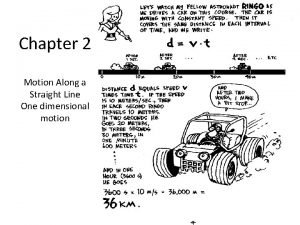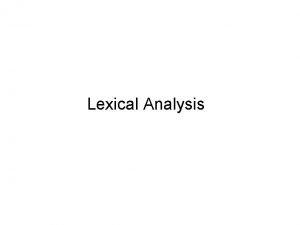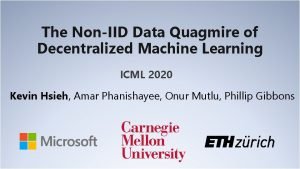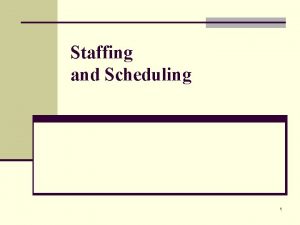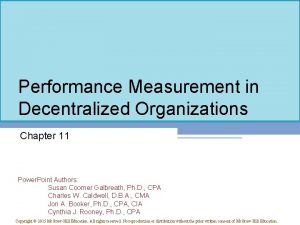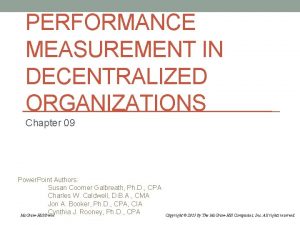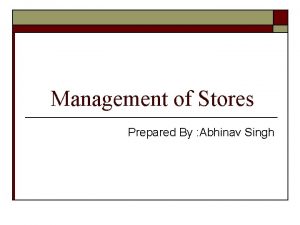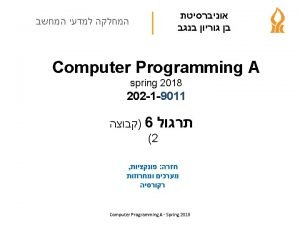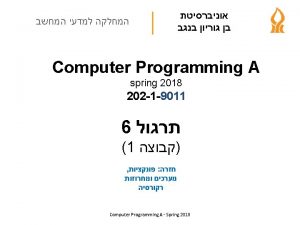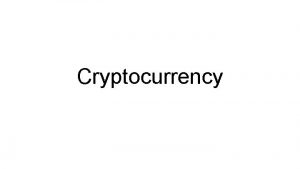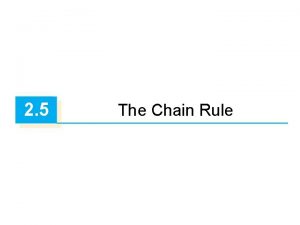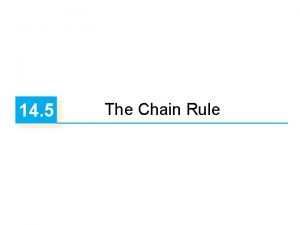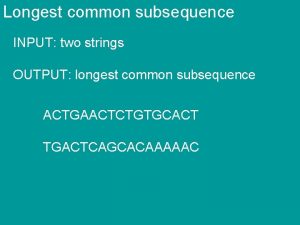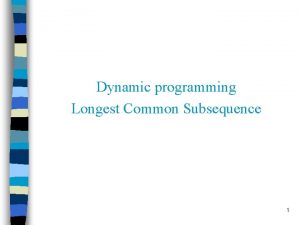Lecture 4 Decentralized Cryptocurrency Longest Chain Rule Decentralized















- Slides: 15

Lecture 4: Decentralized Cryptocurrency Longest Chain Rule Decentralized Identity, Ownership, Teansfer Bitcoin’s backbone Reference: Chapter 2, Princeton University Press book

Basic Cryptocurrency: Scrooge. Coin: (coin. ID, signature of Scrooge) Scrooge creates coins Transaction: Transfer of coin ownership This: hash pointer to coin Alice: publickey of Alice Signed by owner of coin Pay this to Alice

Two types of transactions Createcoins can only be created by Scrooge multiple coins created at the same time each coin has a recipient (identified via public key) Paycoins consumed coins (list) coins created (list) Total wealth consumed = total wealth created Signed by owner of coins

Transactions are put into a block Data in the Block consumed coins (list) coins created (list) Total wealth consumed = total wealth created Hash pointer to previous block Overall block signed by Scrooge

Transactions are organized into a Blockchain 1. Tamper evident information log 2. Append-only data structure 3. Head of the chain being known is enough to find tamper evidence in any internal block otherwise you’d have to key track of all blocks signed by Scrooge Append only Ledger Blockchain of transactions Signed by Scrooge

Centralization Scrooge new coins can only be created by Scrooge every block has to be formed and signed by Scrooge Main Property security of ownership, transfer of coins. tamper resistant to anyone other than Scrooge tamper evident if Scrooge changes ownership Drawback Scrooge Rent seeking behavior

Decentralization Solution: Get rid of Scrooge Questions Who maintains the ledger of transactions? Who verifies validity of transactions Who creates new coins? Ideal answer: everyone!

Distributed Consensus Question: Who maintains the ledger of transactions? Distributed Consensus Interactive Protocol Allows distributed non-trusting nodes to come to agreement Traditional area of computer science (Byzantine Fault Tolerance) Bitcoin’s consensus protocol is vastly different decentralized identity (permissionless setting) less pessimistic network assumptions

Decentralized Identity Public keys are used as identity Single entity can create vast number of identities Sybil Cannot do majority or super-majority voting

Network Assumption Any node can broadcast to all nodes into the network fully connected network Every broadcast message reaches every node albeit with some delay Bitcoin: ten minutes

Scrooge is replaced by an Oracle Time is organized into slots Oracle selects one of the nodes (public identities) random everyone can verify the unique winner The proposer replaces Scrooge in that slot constitutes a block with transactions validates transactions includes hash pointer to previous block signs the block

Elements of Bitcoin Ownership and Transfer of Coins Integrity maintained (no stealing of coins) Tamper resistant to anyone other than the winner of that slot Tamper evident if the winner changed the block later on Resistant to Denial of Service No transactions can be permanently eclipsed Liveness

Double Spend Attack Adversary can point its block to an older part of the chain Duplicate transaction inserted Plausible Deniability network latency an offline user will not know which block came earlier blocks have no wall clock reference (time stamps).

Longest Chain Rule Nakamoto protocol followed by participants when its their turn to propose a block attach block to tip of the longest chain in its’ block tree Confirmation rule wait until the transaction is buried k-deep in the longest chain

Satoshi’s Table Bitcoin protocol Proposing 1 deep =>. 45 25 deep => 0. 0006 Voting G low mining rate low throughput low voting rate -deep high latency
 Computer security 161 cryptocurrency lecture
Computer security 161 cryptocurrency lecture Tzarget
Tzarget Eltonian pyramid
Eltonian pyramid Product rule
Product rule Chain rule power rule
Chain rule power rule Chapter 22 hydrocarbons answer key
Chapter 22 hydrocarbons answer key What fish eats krill
What fish eats krill Food chain dolphin
Food chain dolphin Longest match rule in lexical analysis
Longest match rule in lexical analysis 01:640:244 lecture notes - lecture 15: plat, idah, farad
01:640:244 lecture notes - lecture 15: plat, idah, farad Bsp classification
Bsp classification Staffing and scheduling in nursing management
Staffing and scheduling in nursing management Project planning begins with the melding of
Project planning begins with the melding of Performance measurement in decentralized organizations
Performance measurement in decentralized organizations Performance measurement in decentralized organizations
Performance measurement in decentralized organizations Advantages of decentralized stores
Advantages of decentralized stores




